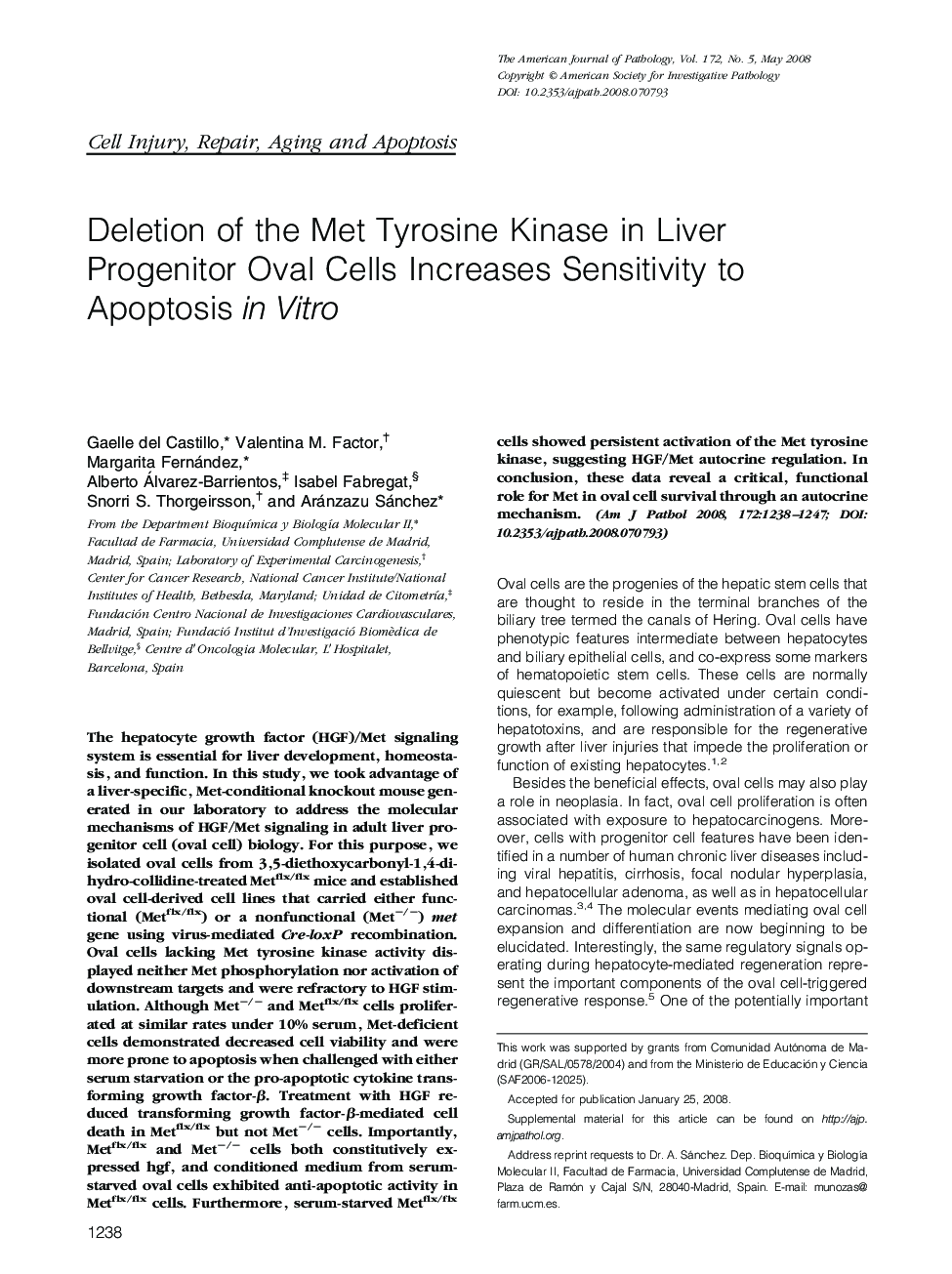| Article ID | Journal | Published Year | Pages | File Type |
|---|---|---|---|---|
| 2866038 | The American Journal of Pathology | 2008 | 10 Pages |
The hepatocyte growth factor (HGF)/Met signaling system is essential for liver development, homeostasis, and function. In this study, we took advantage of a liver-specific, Met-conditional knockout mouse generated in our laboratory to address the molecular mechanisms of HGF/Met signaling in adult liver progenitor cell (oval cell) biology. For this purpose, we isolated oval cells from 3,5-diethoxycarbonyl-1,4-dihydro-collidine-treated Metflx/flx mice and established oval cell-derived cell lines that carried either functional (Metflx/flx) or a nonfunctional (Met−/−) met gene using virus-mediated Cre-loxP recombination. Oval cells lacking Met tyrosine kinase activity displayed neither Met phosphorylation nor activation of downstream targets and were refractory to HGF stimulation. Although Met−/− and Metflx/flx cells proliferated at similar rates under 10% serum, Met-deficient cells demonstrated decreased cell viability and were more prone to apoptosis when challenged with either serum starvation or the pro-apoptotic cytokine transforming growth factor-β. Treatment with HGF reduced transforming growth factor-β-mediated cell death in Metflx/flx but not Met−/− cells. Importantly, Metflx/flx and Met−/− cells both constitutively expressed hgf, and conditioned medium from serum-starved oval cells exhibited anti-apoptotic activity in Metflx/flx cells. Furthermore, serum-starved Metflx/flx cells showed persistent activation of the Met tyrosine kinase, suggesting HGF/Met autocrine regulation. In conclusion, these data reveal a critical, functional role for Met in oval cell survival through an autocrine mechanism.
